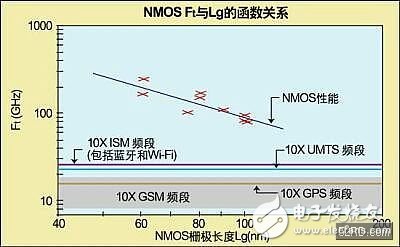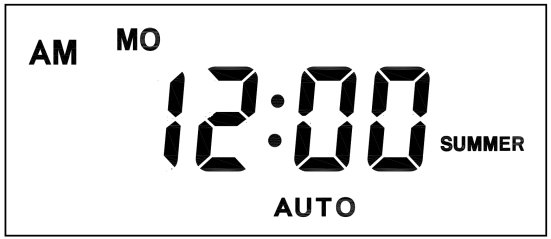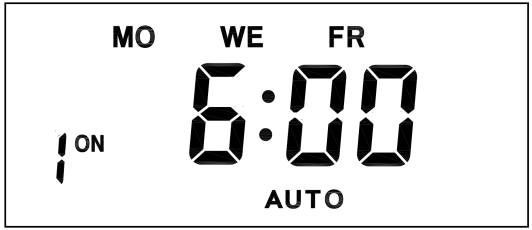As semiconductor manufacturing capabilities continue to advance, the integration of thousands of logic gates onto a single chip has made system-on-chip (SoC) technology increasingly dominant in the future of integrated circuits. However, when people refer to SoCs today, they often mean systems that combine digital baseband processing with data converters, high-speed analog I/Os, and even some RF circuits—though these are generally not too complex.
One of the major challenges in SoC design is RF integration, primarily due to process technology incompatibilities. Integrating RF components on a digital die can reduce yield or increase testing costs, which in turn raises production expenses significantly.
But the issue is more complex than just technical limitations. From an SoC system perspective, integrating RF circuitry introduces numerous challenges in circuit design, physical implementation, and manufacturing and testing of hardware. These hurdles require careful consideration and innovative solutions.
Recently, however, advancements in CMOS manufacturing have helped overcome many of these obstacles. This has enabled developers to move RF signal processing into the digital domain. Instead of struggling with analog designs, chip designers can now use digital RF technology and leverage familiar tools and processes to handle RF signals efficiently.
It's impossible to integrate only one type of radio in modern devices. To meet the compact form factor of mobile phones or PDAs, it’s necessary to integrate digital, analog, and RF functions on a single chip. Otherwise, cost and size constraints will limit the ability to add new features. An integrated radio takes up half the silicon area, board space, and power compared to traditional radios, making it a strong choice for meeting mobile device design goals.

**Figure 1:** Tracking the cutoff frequency of each process node helps evaluate which communication bands can be processed in the digital domain.
Looking at the requirements of 3G mobile phones, users expect high-resolution displays, advanced gaming features, PDA functions, and multimedia capabilities like video conferencing and audio playback. On the RF side, it's reasonable to integrate multiple radios into a single phone. These include:
- GSM support across multiple bands
- 2.1 GHz UMTS
- GPS for positioning and synchronization
- Bluetooth for personal area networks
- WiFi for network connectivity
- Digital TV and audio broadcasting
Today, RF components make up more than half of all devices on a board, with a single radio taking up 40% of PCB space. Adding more radios for features like Bluetooth, GPS, and WLAN increases these numbers dramatically. While some circuits can be shared, the need for smaller, more efficient radios remains critical.
The practical challenges of integrating digital, analog, and RF circuits have posed significant hurdles for those aiming for full silicon integration. Current EDA tools still lack the capability to fully verify and test complex RF circuits on SoCs. Issues such as poor small-device matching, high 1/f noise, and the absence of sufficient on-chip passive components remain problematic.
Despite these challenges, integration is essential for reducing the cost, power consumption, and complexity of radio designs in smartphones. To make this possible, the industry needs breakthroughs in wafer processing, system design, and circuit design. Even though SoC designers may not directly deal with all these challenges, understanding them is crucial, as they define the real-world performance and limitations of the final device.
For example, while integrating RF using bipolar or BiCMOS processes is technically feasible, the low yield and high testing costs make it unsuitable for mass production. SiGe BiCMOS is another option, but it lags behind digital CMOS in terms of process nodes, making it less cost-effective for memory-intensive applications.
Even CMOS-based RF integration comes with its own set of difficulties. Implementing analog components like mixers, filters, and amplifiers is challenging, especially with voltage fluctuations. Early device modeling for new process nodes is often insufficient for high-precision analog design.
A promising alternative is to shift RF functionality entirely into the digital domain. By processing RF signals in the digital domain, there's no need for complex and expensive analog masks. Chip design becomes simpler, as developers can better understand system behavior during simulation and integrate programmable hardware and software elements for greater control over signal processing.
For instance, noise from the power supply can interfere with VCOs, affecting system efficiency. Most wireless designs require regulators and passive components to mitigate this. Integrating these into the transceiver reduces the need for external components, simplifying the design and saving space.
Designers can also integrate digital tuning and self-calibration into the VCO, along with loop filters to extend the tuning range. For digital circuits to process analog signals, they must operate at extremely high speeds. The device cutoff frequency (Ft) is a key metric used to assess a process’s ability to handle RF signals.
Digital Timer
Instruction Manual
1. Features
Clock display, 10 sets of adjustable timed power control, randomized power control, manual switch and optional DST setup.
2. First time charging
This Timer contains a rechargeable battery. It is normal that the new/old model runs out of battery if it wasn`t being charged for a long period of time. In this case, the screen will not turn on.
To charge : simply plug the timer to a power outlet. The charging time should take at least 15 minutes.
If the screen doesn`t light up or displays garbled characters, simply reboot the system by pressing the [RESET" button.
3. Set clock

Hold [CLOCK" button and [WEEK" button to adjust week.
Hold [CLOCK" button and [HOUR" button to adjust hour.
Hold [CLOCK" button and [MINUTE" button to adjust minute.
Hold [CLOCK" button and [TIMER" button to select 12 hour/24 hour display.
Hold [CLOCK" button and [ON/AUTO/OFF" button to enable/disable DST (daylight-saving-time).
4. Set timer
Press [TIMER" button, select and set timer. Setting rotation : 1on, 1off, 2on, 2off, ...... , 10on, 10off.
Press [HOUR" button to set hour for timer.
Press [MIN" button to set minute for timer.
Press [WEEK" button to set weekday for timer. Multiple weekdays can be selected. ex: if selected [MO", the timer will only apply on every Monday; if selected [ MO, WE, FR", the timer will apply on every Monday, Wednesday and Friday.

Press [RES/RCL" button to cancel the selected on or off timer. The screen will show "-- -- : -- --" , the timer is canceled.
Press [RES/RCL" button again to reactivate the timer.

When timers are set, press [CLOCK" to quit timer setting and return to clock.
5. Random function

Press [RANDOM" button to activate random function, press again to cancel function.
System only runs random function when [AUTO" is on.
Random function will automatically start the timer from 2 to 32 minutes after the setting.
ex : if timer 1on was set to 19:30 with the random function on, the timer will activate randomly between 19:33 to 20:03.
if timer 1off was set to 23:00 with the random function on, the timer will activate randomly between 23:02 to 23:32.
To avoid overlapping, make sure to leave a minimum of 31 minutes gap between different sets of timer.
6. Manual control
Displayed features:
ON : socket turns on.
OFF : socket turns off.
AUTO : socket turns on/off automatically via timer.
Manual ON setting
Press [ON/AUTO/OFF" button to switch from [AUTO" to [ON".
This mode allows socket of the device to power up. Power indicator will light up.
Manual OFF setting
Press [ON/AUTO/OFF" button to switch from [AUTO" to [OFF".
This mode turns socket of the device off. Power indicators will turn off.
7. Electrical parameters
Operating voltage : 230VAC
Battery : NiMh 1.2V
Power consumption : < 0.9W
Response time : 1 minute
Power output : 230VAC/16A/3680W
Q&A
Q: Why won`t my timer turn on?
A: It`s out of battery, you can charge the timer by plugging onto any power outlet. Charge the device for at least 15 minutes. Then press [RESET " button to reset the device.
Q: Can I set seconds of the timer?
A: No, the smallest time unit is minute.
Q: Does my timer keeps old settings without being plugged onto a power outlet?
A: Yes, the timer has an internal battery, it allows the timer to save settings without a power outlet.
Q: Is the battery rechargeable?
A: Yes, the battery is rechargeable. We recommend to charge it for 4 hours so the battery is fully charged.
Q: Does the timer needs internet connection?
A: The timer does not need internet.
Q: Does the screen have back light function?
A: It doesn`t support back light.
digital timer, digital timer socket, electronic timer socket, timer socket
NINGBO COWELL ELECTRONICS & TECHNOLOGY CO., LTD , https://www.cowellsocket.com



